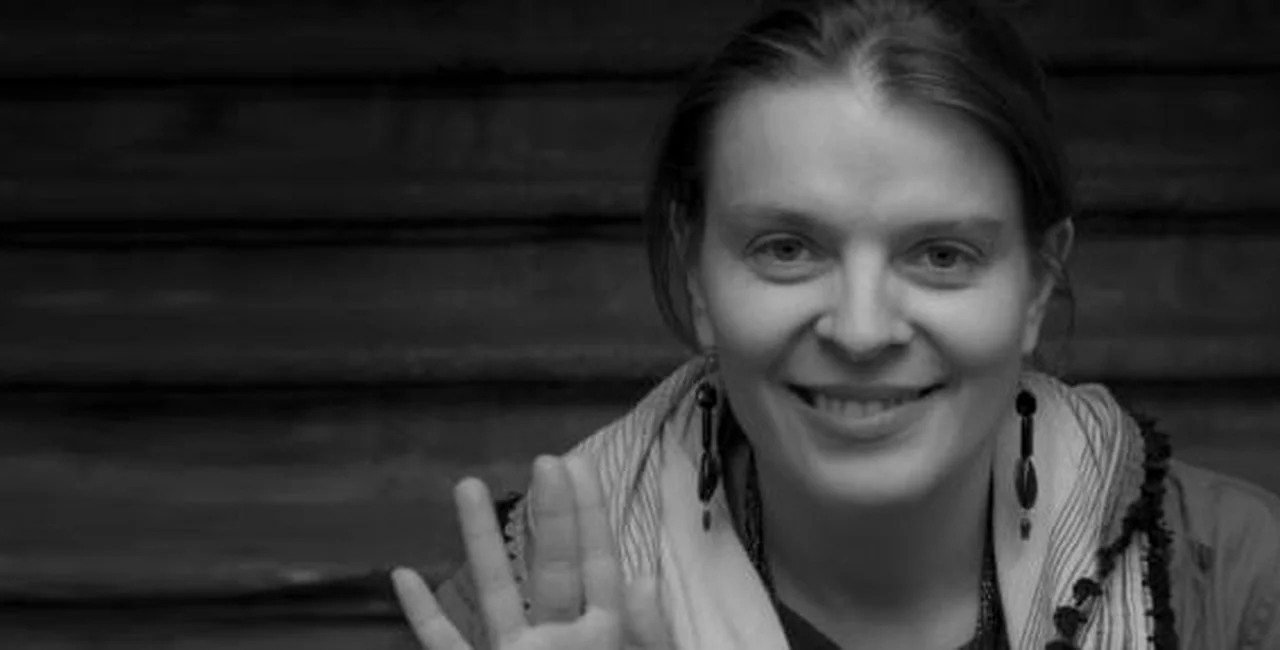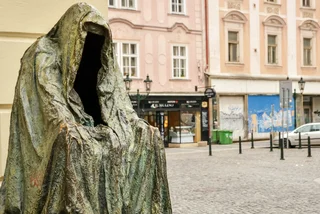This year´s Prague Quadrennial, the massive theatre exhibition held in the Czech capital every four years since 1967, will witness several changes. This year, the exhibition will take place at the Veletržní Palace, and more than ever before it will seek out audiences at other locations around town. Most of all, the organizers hope to attract visitors to the National Theatre´s piazzetta, which will be the site of one the PQ program´s main pillars, “Intersection: Intimacy and Spectacle”. PQ 2011´s artistic director Sodja Lotker explains this section´s origins, its form, and its objective.
What is the aim of Intersection, and what can we expect to see?
Our aim is to bring theatre closer to the people, to take it out of the theatre´s four walls and to enable audiences to experience it in a way that, for the most part, they are not used to. We also want to show that scenography is not just a part of theatre, but that it can also be found in video art, installation art, choreography and other art forms. The piazzetta will be home to thirty large boxes featuring various performances. I believe that it will be a real experience – it is very interactive, with some boxes large enough for just one viewer. Another important thing is the fact that these are live events, that roughly one half of these 30 boxes will be “occupied” by a live performer, dancer or choreographer. For example, the famous choreographer Josef Nadj will live there for the PQ´s entire duration.
In addition to the traditional competitive sections (countries and regions, student section, architecture) and costume exhibit, the PQ has in recent years also featured a special project – in 2003, this was “Heart of PQ” and in 2007 it was “Scenofest”. Is Intersection the special project for this, the 12th PQ?
Intersection isn´t entirely new; it is based a little bit on PQ 2003, when we had the Heart of PQ project in the central hall of the Industrial Palace, where we built a kind of theatre town in which nine groups “lived” and performed non-stop on the topic of the five senses. The Heart of PQ was also interactive; it placed viewers into different situations and included them in the performances… So it isn´t a completely new idea, it´s more like its expansion. But we believe that the original project was a little difficult to grasp for audiences. With Intersection, we are trying to do something more readable. We have prepared several boxes, each of which will be hosting an event, happening or performance… Every artist is given a precisely defined space and audiences will know exactly where they can find who and what, where to go and what they are supposed to do there.
Who will be participating in Intersection?
Visual artists, choreographers, dramatists, sound installation artists. I chose the participants in order to create a kind of map of all disciplines involved with performance while at the same time presenting a diverse range of topics and human activities associated with performance. The idea is for the audiences that walk through this whole labyrinth to be a little bit disoriented – they will not receive a clear definition of the concept of performance, but will instead say to themselves: “Aha, performance (theatre) can be anything”.
This year, the PQ has had to find new space: in 2008, during preparations of this year´s PQ, one wing of the Industrial Palace at Prague´s Výstaviště Exhibition Grounds burned down. For an exhibition with an established location, does this represent a handicap or an opportunity?
At first, we were a little worried. We had difficulties finding a sufficiently large building so that the entire exhibition would fit into one space. Originally, we had been looking for one single space for all projects, since we were used to having the entire PQ in the Industrial Palace. But then we realized that it would be better for us to have several spaces throughout town, which would make us more like certain famous art festivals, such as the Venice Biennale or Kassel´s documenta. If we spread our exhibition out over Prague, then it will be closer to the people. Also, theatre professionals and visitors to Prague will find such a walking tour of Prague more pleasant, since the event won´t feel so much like a “trade fair”. The country exhibits in the Veletržní Palace will be something like Venice´s Giardini, and Intersection – the PQ´s curated section – will be something like the Arsenale.
These changes to the PQ´s concept have been reflected in the exhibition´s name….
Yes, we have expanded the name “Prague Quadrennial” to the more accurate “Prague Quadrennial of Performance Design and Space” – a change that is even more pronounced in English than it is in Czech, where we continue to have difficulties with terminology, since new theatre forms are not well defined here. The concept of “performance art” (in Czech simply “performance”) has taken hold here, but although this art form also makes of dramatic tools, it is still seen as a belonging to the visual arts. “Performance art” is something done by purely visual artists, while “performing arts” is the stage arts, i.e., theatre, dance, and music – everything that is presented live. The main reason for the change in name is our attempt to show that theatre long ago transformed into something very different than what people traditionally imagine. Of course, this fact was presented at earlier exhibitions as well, showing up in various national expositions, but this year we aim for it to resound more intensively. We have asked the artists involved in the national expositions to think about scenography outside of traditional spaces and to look at the scenographer as a Renaissance or “multifunctional” artist, because scenographers today are often visual artists who work with more than theatre.
So audiences can look forward to a truly interactive exhibition?
Interactivity is an important feature of this year´s PQ, but our aim is not to create a purely physical interactivity or the kind of interactivity provided by new media. We want to pull audiences into the action, but not to pull them out of their chairs and onto the stage as volunteers. Our emphasis is on showing that there exist different ways of looking at theatre, that audiences can have different points of view as well. But it is also a mental form of interactivity. Audiences don´t have to go and shout something the moment they enter the theatre space – in our case, the Intersection boxes. In my mind, the important thing is for viewers to realize that if they don´t give anything, then they won´t get anything in return. Among other things, theatre is about responsibility; audiences, too, need to invest something in order to get something back.
After experiences Intersection, won´t the traditional Section of Countries and Regions feel a little boring, or at least lacking in energy?
Definitely not. At least ten participating countries will be presenting non-stop live action. Of course, there will also be traditional expositions and scenographic models, but I think that most of the exhibitors have begun to think about how they are going to present contemporary theatre in a contemporary format. This year´s PQ was preceded by a series of symposia based on the idea that theatre as an artistic discipline lacks something that is common to the visual arts: curators. And since we have little influence on the national expositions, we decided to organize a curatorial section – Intersection. Most of the PQ expositions are prepared by scenographers or professors of scenography. Our aim at these symposia was to inspire them to think more compactly in preparing their expositions. And by changing our name, we also changed their project description a little bit – to inspire them to look outside of theatre, outside the theatre building. And I think that this idea took hold.
Other traditional competitive sections are the student section within the national expositions and the architecture section. Are there any changes to these sections this year as well?
During preparations for this year´s PQ the architecture section just barely made the cut, since we didn´t feel like exhibiting models or architectural drawings that not even scenographers would look at and for which it made no sense to exhibit them outside of the context of a live performance. We wanted to create a dialog between scenographers and architects, between live performances and the building. The assignment for the architectural section was to show what space there exists for theatre outside of the theatre building. Our aim was for the expositions to present, for instance, site-specific projects or virtual spaces. Working with the section´s curator Dorita Hannah, we designed the section as a kind of laboratory. There will be debate and an extensive workshop for doctoral students in architecture and architectural theory involving theatrical space – which we understand in a socio-political context as not only a space for performance, but also in more general terms as a place for the community to meet and get together. For this reason, it is great that this section will be housed in a church (Prague Crossroads), which originally was also a place for the community to gather. In fact, the entire PQ should be a kind of meeting-place, because there are not many places where theatre can meet with the visual arts to such an extent, and PQ should be this kind of trans-disciplinary platform in the future.
Interviewed by Markéta Horešovská, Czech News Agency












 Reading time: 7 minutes
Reading time: 7 minutes 























